
One of the joys of growing your own tomatoes is the unbeatable taste.
Store-bought tomatoes can’t come close to a juicy, flavourful tomato picked from your backyard. But is there a way to make this tasty gardening delight even tastier?
As it turns out, there are many.
The taste of the tomatoes from your garden will depend on a combination of factors – variety, care, and chemistry. Variations in these factors may produce tomatoes from two plants that taste completely different (even if they are the same variety).
By managing and optimizing the factors that influence the taste of your tomatoes, you can produce the most flavourful harvest possible, season by season.
1. Choose A Variety Packed With Flavor
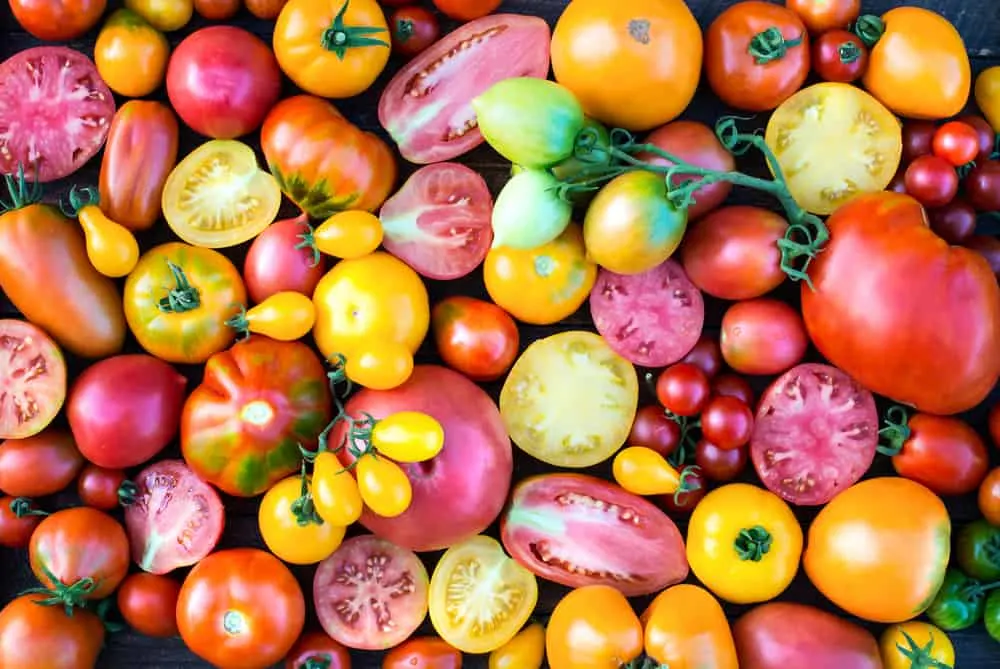
The first (and greatest) influence on the taste of your tomatoes is, of course, the variety.
There are thousands of tomato varieties to choose from, each with its own unique flavor profile.
Store-bought tomatoes are not bred with flavor in mind. Their main tasks are to withstand handling from transportation and have as long a shelf life as possible.
But, when you grow your own tomatoes, you can cherry-pick the variety to suit your own tastes. These varieties may differ from the standard store-bought red tomato many of us are used to. There are differences in color, shape, texture, sweetness vs acidity – the list goes on.
Start with a variety you like the taste of. If you choose to grow multiple tomato plants, pick a few varieties with different tastes to suit different cooking purposes. For example, acidic tomatoes are great for sauces, while sweet tomatoes are ideal for snacking.
As a general guide, smaller tomatoes tend to have a higher sugar concentration, while larger ones are more acidic.
The color of the fruit can also give an indication of the taste. Red tomatoes are generally more acidic (although they still have a high sugar content), yellow or orange tomatoes are milder, and purple or black tomatoes typically contain an even balance of sugar and acidity.
Heirloom varieties are often tastier too, as their primary purpose is flavor.
Ultimately, it’s up to personal taste. Your tastiest tomato variety will likely not be the same as your neighbors. Match your chosen variety to your tastebuds and you’ll be guaranteed a bounty of tasty tomatoes.
2. Choose Varieties Suitable For Your Region
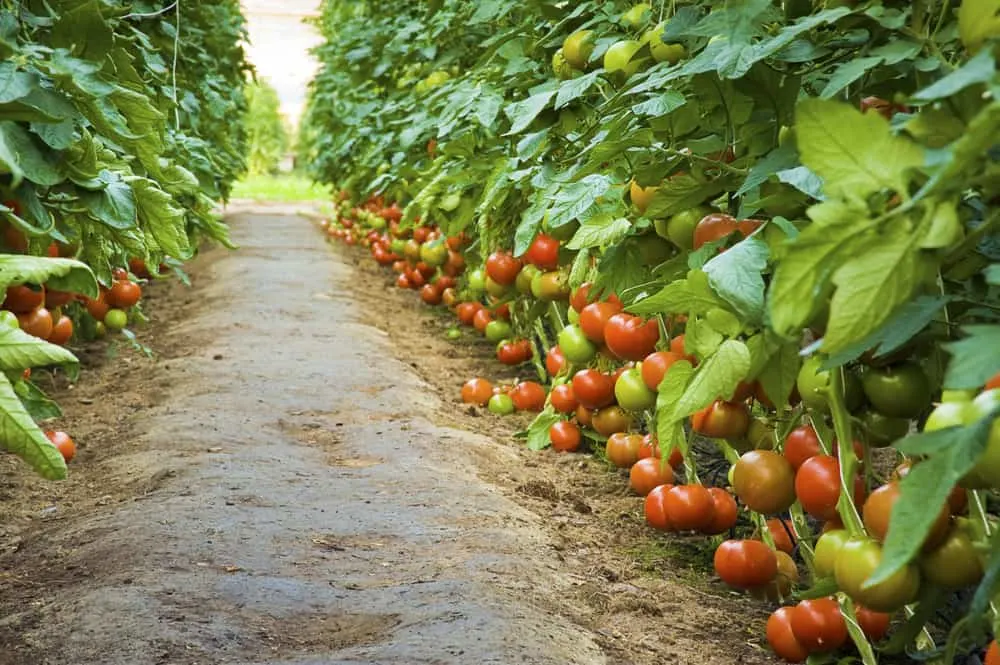
Although there are thousands of varieties to choose from, if flavor is your main concern, you may be better off limiting your choices to those varieties that grow exclusively in your region.
Differences in conditions and climate have a huge impact on the taste of a tomato. Two plants of the same variety thousands of miles apart can taste wildly different due to the different regions they are grown in.
Unfortunately, it’s not enough to match the growing conditions or even USDA Hardiness Zone. Factors out of your control, such as rain, wind, temperature, and humidity will continue to influence the tomatoes’ flavor, even with all other factors matched and accounted for.
That’s not to say you can’t grow a variety not native to your region anyway. Variety remains the biggest influence on taste, and if you’ve found a variety you love, give it a try. But, if you’re looking to get the most flavor out of your tomatoes, opt for a variety guaranteed to grow well in your region.
3. Provide Ample Sunlight
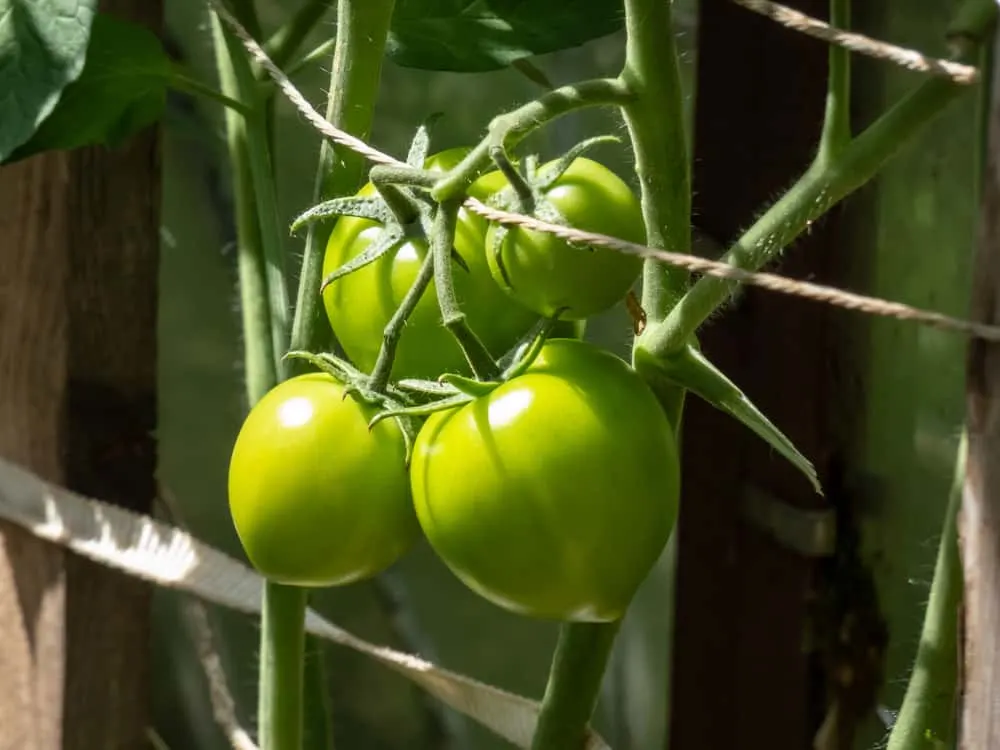
Good care is not only vital for the health of your tomato plants – it can also produce tastier fruits. And the first element of good care to consider is sunlight.
Tomatoes are high-light plants that need a minimum of 6 hours of direct sunlight per day. The word minimum is key in that sentence, however, as plants that receive more sunlight will produce more fruits with a better flavor.
Sunlight fuels the plant’s fruit production and facilitates the transformation of carbohydrates into sugars, making the fruits sweeter. Thus, the more fuel they have, the better your tomatoes will be.
4. Feed The Soil The Nutrients It Needs
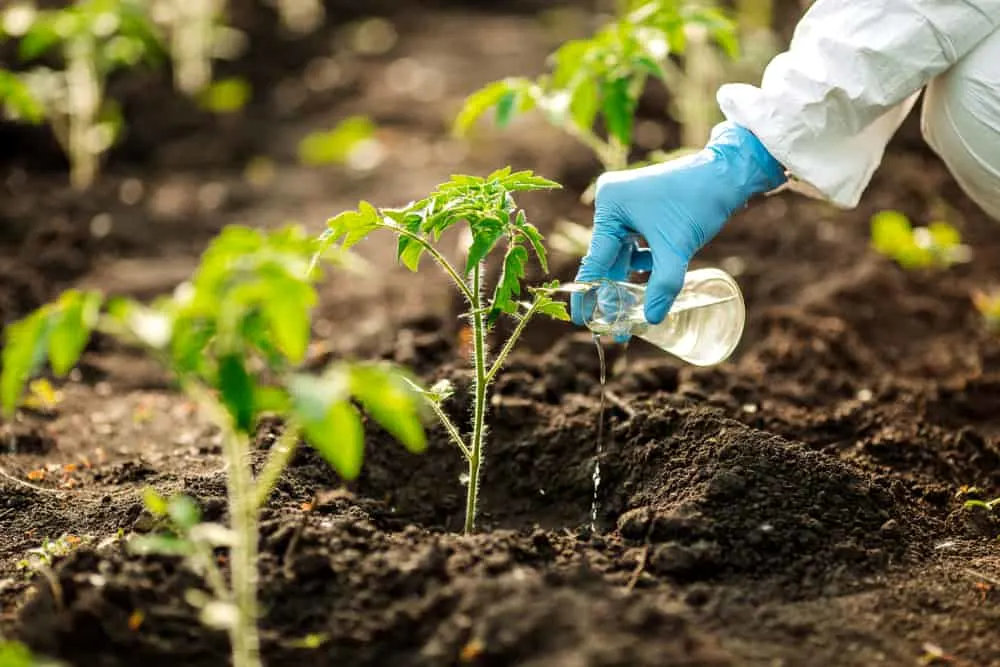
The health of all tomato plants begins with good soil. Even with all other care requirements fulfilled completely, bad soil can still negatively impact the taste of your tomatoes. This goes for the consistency, the level of nutrients, and the balance of nutrients in the soil.
Always start your tomato plants in soil enriched with plenty of organic matter, such as compost. A 1:1 ratio of compost and soil will give the early plants the boost they need to develop healthy, deep roots with enough aeration and drainage to prevent suffocation.
You can also mix in a slow-release fertilizer to provide the plant with plenty of nutrients as it begins growing.
There are other things you can mix into your tomato planting hole to improve the health of your tomato plants. Here are five of those things.
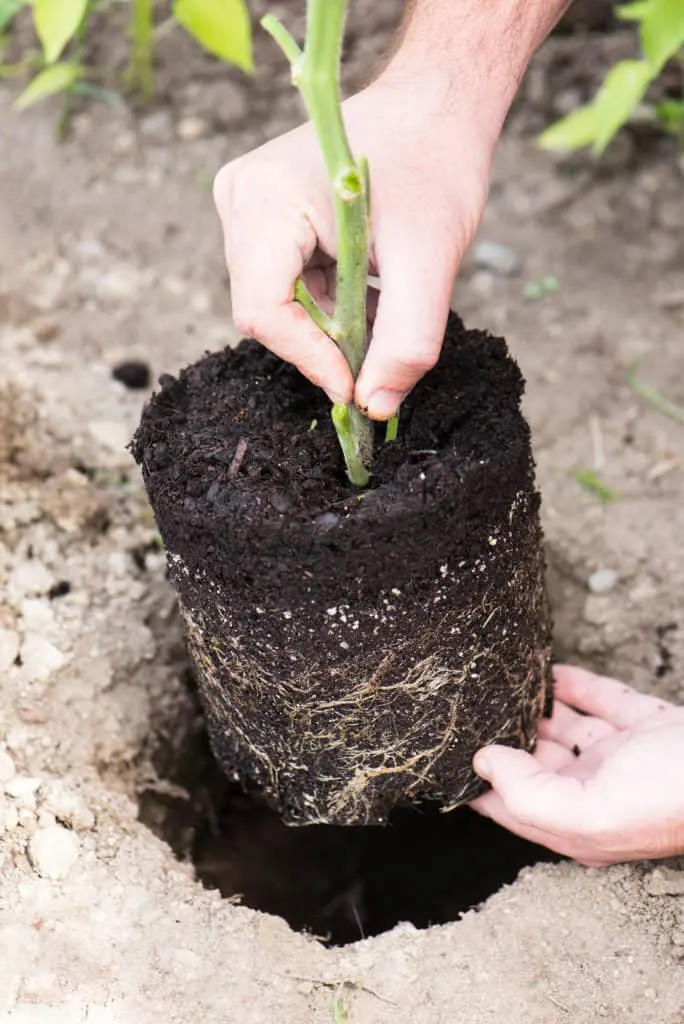
Throughout the season, you will also need to fertilize your tomato plants to provide them with the right nutrients to facilitate fruit production.
In the early stages of growth, tomato plants need plenty of nitrogen to grow strong stems and plenty of leaves. But, once the plant has matured, phosphorus and potassium are needed in greater amounts to allow the plant to focus on fruit production.
Research shows the levels of potassium in the soil have a significant impact on the taste of the fruits, as well as sulfur, boron, sodium, and chlorine. Ensure your soil contains the right balance of these nutrients, and you will be rewarded with flavourful tomatoes come harvest time.
Ultimately, the better the quality of the soil, the healthier the plant will be. And a healthy plant produces the tastiest fruits.
5. Water Less To Improve Flavor
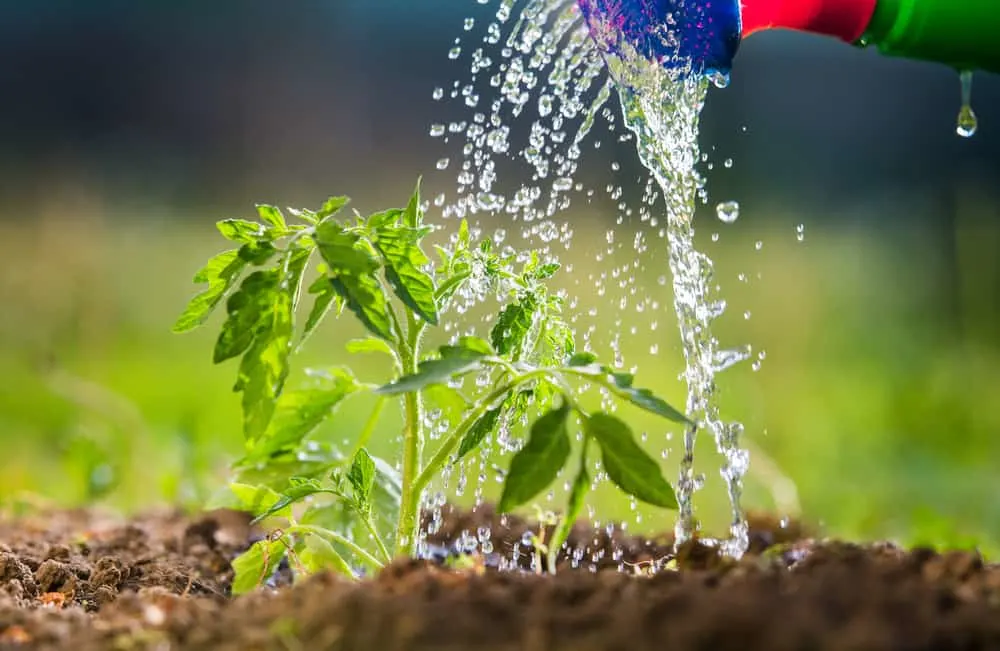
Tomatoes contain a lot of water – around 95% to be exact. Their water content influences the fruits’ juiciness as well as their flavor. Correct watering is therefore essential to tasty fruits.
Watering for the best flavor requires a delicate balance. Water too little and your plant will become stressed and more prone to diseases. Water too much and the fruits will have an even higher water content, diluting the flavor.
It is better to water too little than too much in this case. Tomatoes grown in dry climates typically produce the most flavorful tomatoes.
Some gardeners argue that slight water stress can actually benefit flavor, as the plant produces bigger fruits with more seeds as a survival mechanism. But, for this flavor benefit, you will sacrifice yield and possibly the health of your plant as it becomes more susceptible to pests and diseases.
It is best to check the soil every few days and water thoroughly once the top layer of soil has completely dried out. Once your plant has produced several fruits, limit watering to prevent the tomatoes from cracking.
For home gardeners, no quality is more important in a tomato than taste. After all, no one wants to be stuck with a pile of harvested tomatoes they don’t like the taste of. With these simple tips, you’ll have a bountiful harvest of the tastiest tomatoes to enjoy all season long.
